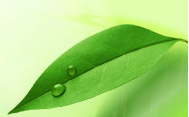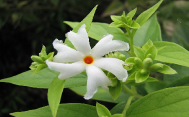Siddha is a comprehensive scientific medical system based on holistic health principles for catering to preventive, promotive, curative, rehabilitative and rejuvenative health needs. The word Siddha is derived from the Tamil root word Siddhi (“Citti’) which means attaining perfection, heavenly bliss and accomplishment. The Siddha System has evolved on the basis of Ninety six principles which include physical, physiological, and psychological aspects of every human being. Holistic approach is the highlight of Siddha treatment, which is prescribed on the basis of body, mind, psyche and genetics of the patients.
Siddha treatment is popular for chronic ailments e.g. Neurological/Neuro-muscular disorders such as Hemiplegia, Paraplegia and Parkinsonism, Arthritis, Skin diseases like Psoriasis and Vitiligo, Respiratory diseases, and Peptic ulcer and other gastro-intestinal disorders. Non-communicable Diseases e.g. Diabetes mellitus, Hypertension, Dyslipidaemia and Ischaemic Heart Diseases. Paediatric diseases, Infertility and Gynaecological disorders are also successfully managed in Siddha system. The system is practised in India, Srilanka, Malaysia, Singapore, United Arab Emirates etc. In India, particularly in Tamil Nadu the system has been scientifically developed, nurtured and systematically integrated in the healthcare delivery system over the years.
Siddhars, are the founders of Siddha Medicine. The antiquity of Siddha Medicine is difficult to ascribe to a particular period. However, the evolution of Siddha system dates back 6000 – 3000 BC.
In Indian subcontinent Siddha medicine has its strong roots reflecting India’s culture, tradition and heritage. Having Dravidian origin it serves mostly the people living in Indian sub-continent. Sivan is believed to be the first Siddhar who preached the Siddha Science to his consort Umadevi who in turn passed it on to Nandi devar Nandi devar taught Sage Agathiyar and Agathiyar in turn taught Pulathiyar, Theraiyar and others.
Sage Agathiyar being one of the foremost disciples of Sivan and because of his significant contribution to Siddha science is considered Father of Siddha Medicine, Tamil language and culture.
The contribution made by a line of eighteen Siddhars has been significant for the growth and development of Siddha system of Medicine.
According to the theory of origin of Lemurian Continent, it is believed that the Kumarikkandam was submerged in the Indian Ocean. The theory of Mediterranean Origin explains that Dravidians belong to Mediterranean stock and due to Aryan invasion they moved towards south. Renowned historian R.S.H. Risely rightly says that Deccan itself is one of the ancient geological formations in the world and the great Tamil scholar K. A. Appadurai states that the culture of the Tamils is the cradle of world civilization.
Tamil is one of the oldest languages in the world. It was nurtured and developed at different points of time by three Tamil academies of which the First one dates back to 3000 B.C. The third Tamil academy was established in 2000 BC. The oldest Tamil book Tholkappiyam is also considered to have been written in 1400 B.C. ‘Tholkappiyam’ contains a lot of medical information. Tirukkural (around 2nd century A.D.) has a separate chapter of 10 couplets on Medicine. Like Tirukkural some of the ethical works in Tamil such as Thirikadugam (Three pungent drugs) and Elathy (indicating Cardamom) are literary evidences for the antiquity of the medicine. Three vital life factors, namely Vali, Azhal and Aiyam (Vatham, Pitham and Kapam) are mentioned by both Tholkappiar and Valluvar.
Silappathikaram and Manimekalai, the twin epics quote the theories of five senses, logic (Alavaigal), Dhasanadi, Dhasavayu, Anuviyal and Asivakam. A 13th century inscription found in Chidambaram temple mentions about a list of grants given to Vaithiyars (Siddha Physicians), Surgeons and Mid-wives Siddhars’ findings on the characteristics of plants, minerals and animal products and their knowledge of the properties of drugs, their purification, processing, right dosage, toxicity, antidote and clinical application have been preserved and handed down to the posterity in the form of verses initially by word of mouth, then as transcripts on palm leaf manuscripts and then in the form of printed books.
Siddha Medicine has various divisions such as General Medicine, Surgery, Paediatrics, Geriatrics, Obstetrics and Gynaecology, E.N.T. Ophthalmology, Toxicology, Psychiatry, Rejuvenation, External Therapy, Pressure Manipulation Therapy, Massage Manipulation Therapy, Pathology, Pharmacology and Dietetics.
A well-developed infrastructure of AYUSH systems in India exists under the Department of AYUSH under Ministry of Health & Family Welfare, Government of India and there are separate Directorates of AYUSH in 23 states.
As on 01.01.2012, the health care services through Siddha are being extended to the masses through a huge network of 9 Colleges, 14 Major hospitals, 13 Maternal and child health hospitals, 30 District Head- quarters hospitals, 150 Taluk hospitals, 75 Non taluk hospitals, 449 Primary Health Centres, 23 regular dispensaries, 7 Tribal dispensaries, 1 Mobile Medical Unit, 46 Rural dispensaries and 295 NRHM wings at Primary Health Centre (PHC). This infrastructure includes both public and private sectors. About 338 licensed drug manufacturing units produce classical and proprietary Siddha Medicines.
A number of public and private organisations carry out research and development works in Siddha. Siddha Medicine is also practiced in Sri Lanka, Malaysia and Singapore where there is a considerable number of Tamil populations. Sensing the resurgence of global interest in AYUSH, the Government of India has taken many initiatives for promotion and propagation of AYUSH systems.
TKDL is a collaborative project between Council of Scientific and Industrial Research (CSIR), Ministry of Science and Technology and Department of AYUSH and it provides protection to our traditional medical knowledge by preventing its misappropriation.
Siddha treatment is sought usually for chronic diseases like Arthritis, Skin diseases like Psoriasis and Vitiligo. Vector-borne diseases like Chikungunya and Dengue are areas where Siddha has gained acceptance. Certain Siddha formulations are found to be effective and supportive in the management of dreadful diseases like HIV, Cancer and Auto immune diseases.
The Siddha system is comprised of four main components: Chemistry, Treatment, Yogic Practices and Wisdom. Man is said to be the microcosm and the universe the macrocosm; what exists in the universe also exists in man.
The human body is functioning on the basis of 96 principles. There are seven physical constituents in our body--- nourishing essence, blood, muscle, fat, bone, nerve tissue and sperm/ovum. The physiological and pathological features of these tissues have been detailed in Siddha literature.
Siddha system mentions about three vital life factors: (i) Vali (Vatham) responsible for all kinds of creation and all the movements in the body. (ii) Azhal (Pitham) is a component of fire, responsible for digestion, blood cell production, maintenance of temperature, giving lustre to the skin etc. (iii) Aiyam (Kapam) responsible for the strength and stability of the body structures.
It supports the functions of respiration, appreciation of taste, cooling of eyes, digestion and flexible movements of joints. Holistic approach is the highlight of Siddha treatment. Treatment procedures in Siddha help in normalizing the vitiated vital life factors. Taste plays a vital role in the principle of treatment. As the six tastes (Sweet, Sour, Astringent, Pungent, Bitter and Salt) and the three vital life factors are formed by the different combinations of five basic elements, the selection of drugs for treatment of diseases is based on these tastes.
Diagnosis is made on the basis of eight kinds of diagnostic tools -- Pulse, Tactile Perception, Tongue, Complexion, Speech, Eye, Faecal and Urine examination. Examination of pulse and urine are very important for diagnosis and in assessing the prognosis
The role of Siddha science in lifestyle management suits even the present age. According to Siddha, “food itself is medicine and medicine itself is food”. Siddha clearly describes the lifestyle, foods, drugs and moral standards. It also explains the rejuvenation therapy which helps in prevention of diseases and promotion of health.
The raw drugs used in Siddha preparations are of plant, mineral and animal origin.
Pathartha Guna Chintamani and Agathiyar Gunavakadam deal with the properties of the crude drugs used in single and compound formulations. Pharmacodynamics of Siddha drugs is based on the concepts of Taste, Character, Potency, Post-digestive Transformation and Therapeutic character. Adjuvant and diet restriction also play a role in Pharmacodynamics. Vehicle is essential as it detoxifies and potentiates the drug given. Raw drugs of animal, mineral and herbal origin are subjected to purification and detoxification before they are used in the preparations of medicine.
Siddha medicinal preparations fall into 64 categories-- 32 are internal medications and 32 are external medications and methods. Muppu, sublimates calx/oxides, red oxides/sulphides, higher order medicines such as consolidation, melting and solidification, amalgamation, strong oxides, concentrates and master pill are important special drugs/preparations in Siddha system.
Unlike contemporary Western Physicians, Siddha Physicians used to prepare the medicines themselves in a small scale for their patients. Due to a paradigm shift in health seeking towards AYUSH, Siddha Medicine is industrialized and sophisticated instruments are used in production. Drugs are of two types--- classical and proprietary medicines which are available in the market. There are nearly 338 manufacturers of Siddha medicine in India and compliance with GMP is mandatory for all the manufacturing units. To ensure cultivation and supply of quality plant materials for ASU (Ayurveda, Siddha, and Unani) drug industry, National Medicinal Plants Board has been established.


.png)
.png)
.png)
.png)
.png)
.png)